#just because of Franz Leopold
Explore tagged Tumblr posts
Text
Elegant, sophisticated, well-dressed vampire all the way!
#just because of Franz Leopold#this is him!#die erben der nacht#franz leopold de dracas#ulrike schweikert#poll#vampires
978 notes
·
View notes
Text

“I don't get why people call Sissi the "Diana of her era". Diana had many faults (like Sissi) but at least she loved her boys. Sissi had no excuse being neglectful of her kids once Archduchess Sophie, her MIL, died. If there's a royal that actually comes close to being the "Diana of her era", it would probably be Astrid of Sweden. Married young like Di (and Sissi, and many other royal and noble women; though Sissi married way younger than Astrid and Diana), popular with the Belgian public, just like Diana was with the British public, and loved her kids. Though unlike Diana (and Sissi), she was a princess by birth, was healthier and happier, didn't seem petty like Di or neglectful and apathetic like Sissi, and sadly died young in a car accident like Di (way younger actually). But then again, even if Sissi wasn't popular with the Austrian public, she was def popular with the Hungarian public. So maybe she does resemble Di (and Astrid) on that front. Other similarities between Astrid and Sissi is that they didn't divorce their husbands, but then again, Astrid died very young, so it wouldn't be possible for her to divorce Leopold + they were madly in love with each other anyway, and Franz Joseph was madly in love with Sissi as well. Sadly, Charles wasn't crazy for Diana (he liked her, but that's as far as it went). Divorce was also uncommon/frowned upon in Astrid and especially Sissi's eras, not so much on Di's era. That said, Sissi had long months of separation from FJ because of her travels, so she, more less, resembles Di on that front as well when Di began traveling a lot after her divorce (mostly for charity work, but her vacations were also notable like Sissi's), they were all young mothers (more so Sissi), and they were all devoted to charity work as well (Astrid and Diana more so. It was more of a side thing for Sissi). And lastly, they all married a young emperor/two young heirs to the throne who would eventually become kings, and all three women had tragic deaths and were deeply mourned. Ok… maybe Sissi was kinda the Diana of her era.” - Submitted by Anonymous
12 notes
·
View notes
Note
Hi my friend 👋, Who is your favorite Habsburg King? One for Austria and One for Spain?
Who is your least Favorite king of all time? I wish you the best.
HIIII !! how good is to receive an ask just the moment i was thinking about going to random dms to infodump people about random hyperfixations . specially from you my friend im wishing you the best too .
I really like habsburg story as it is full of girlbosses and malewifes ( a really cool dynasty ) . IIIII i really like the austrian ones , spaniards are always a mystery to me . I lived there for four years and I still dont catch their accent . My favourite habsburg monarch is emperor Franz II im not normal about him . there is an strong need to scream everytime i think about him . People probably must known him more for the napoleonic wars but I think he is very interesting by his own right . But tbh I really like all habsburgs from Austria they are very babygirls . Maximilian I , Charles V , Ferdinand I , Rudolf II , Leopold I , Charles VI , Marie Theresia , Joseph II and Ferdinand I of Austria ( not to confuse him with Ferdinand I of the Holy Roman Empire ) are my favourites but I really like all of them except for Leopold II and Francis I ( i have a love-hate relationship with him bc he is funny but I hate that he wasnt faithful to Marie Theresia bc !! SHE WAS LITERALLY A 10 ?! ) . From Spain I truly only like Felipe I and Carlos II . The other ones are very boring to me but I get that Felipe II was interesting . I am not mentioning Charles I because I already mentioned him as emperor . Well . He should be here because he is a spanish one yeah . so yeah he is also here i really like him i find him too funny and he was very babygirl . I mostly like infantes of Spain like the Cardinal-Infante Fernando de Austria , Don Juan José de Austria , Carlos de Austria ( son of Felipe II - prince of Asturias before Felipe III ) and Carlos de Austria ( brother of Felipe IV , I really like him !! I find him autistic and awkard asf and I really like that in people . Like Franz II ) . Those are my tastes in Habsburgs sadly I will try not to talk about the women too as to not make this too big but I also love their queens . Felipe IV is an enigma to me I find him incomprehensible . Truly a mystery like Spain itself . I liked that moment when Louis XIV and Philippe d'Orléans went to hug him and cry when they met to give Louis XIV his wife that was hilarious .
2.IIII I would say Henry VIII cus he is easy to hate but I do also hate Henry VII because he is the one who made my homecountry a mess ( Wales - if you ever see me talking weird english , is because its not my native language ! I speak welsh hehe ) . I really really hate Charles X of France because he ruined my favourite queer mentally ill dynasty ( bourbons ) and destroyed everything Louis XVIII worked for ( he is my !! favourite historical figure ever ) . I dont really hate many monarchs bc even if they are bad they are amusing to know about . The real hate I have to a historical figure is to Saint-Just but i completely agree with his ideas but he was a real asshole and i dont know how robespierre was friend of that guy . he was literally an edgy teen trying to be a politic is everything i hate about politics but worse because i agree with everything he said . except killing louis xvi that was a mistake . they should have put louis xvi in a box and send it to austria if they didnt wanted him there
#mariana ' s#HIIIII !! i have to send you more personal asks too#but i always fear that my tastes in history are too weird like who the fuck is louis xviii#i I HAVE SOME IDEAS may come back tomorrow to ask bc i need to go to sleep#see ya later#:3#<--- im always looking at your interactions like this but i am very bad at showing emotions on text
5 notes
·
View notes
Text
What would happen if the characters from the books would meet their series counterparts:
Alisa:
They would get along very well because both are very social and kind
Would probaply bond over books and how arrogant their boyfriends are ("Wait he did what?! That's even worse than mine!!")
They would literally become best friends and have a deep love for each other
Also they would go studying together a lot
Lars/Franz Leopold:
They would totally despise each other's guts!!
Lars just thinks Franz Leopold is an arrogant, spoiled brat
Franz Leopold thinks of Lars as a bit of a barbarian who hasn't an idea on how to be a gentleman
He would probaply look down much on him ("Wait what do you mean, you don't know how to waltz or hold a polite conversation?)
They definitely would hold up a contest on who is the most handsome
There would be a lot of sarcastic comments from each side and maybe (just maybe) even a fistfight
This would continue untill their girls have enough and force them to get along with each other
Ivy:
They would like each other very much
Both are shadows with unique powers slumbering inside them and bond over that
Book Ivy doesn't really understand the love for Inger but supports it
They both love their brothers and would exchange stories about them
Luciano:
Explanation: in the books Luciano is as old as Alisa, Ivy and Leo/Lars and is part of the main friend group
At first they would just sit in silence because both of them are shy little beans
But later it still would be a bit awkward because well the age difference is something
They wouldn't hate each other, but liking is too much
Fanny/Inger and Anna Christina/Marie Luise:
Everyone hates Marie Luise (because she's the biggest bitch)
Anna Christina and Fanny would be bffs forever: they know they are the hottest, they are confident and they are badass bitches, no explanation needed
Inger would be a bit intrigued by Anna but would get along alright
Tammo:
Book and series Tammo are literally the same person
Would pull pranks on each other but mostly on others (the best pranks the World has ever seen)
Always complaining about how annoying their elder sisters are
Joanne:
Would get along well and don't really care about their age difference (explanation: Joanne is one year older than Alisa and Leo/Lars)
Would speak with their Rats all day and walk through the catacombs of Paris together
Malcolm:
They love each other!!!
Both are english gentlemen
Book Malcolm would be jealous of series Malcolm's powers and in reverse it's the same thing
Probaply have tea time together
Series Malcolm would be devestated to hear that book Malcolm has gotten a love interest ("What? Why didn't I get one?!")
Latona/Nicu:
Definitely had many conversations about falling in love with vampires and being absorbed in their world
But also about how dumb vampire hunters are
Nicu would get a bit jealous when hearing that Latona met not only Bram Stoker but also Oscar fucking Wilde!!!
Talks about literature all night
#yeah Clarissa and Karl Philipp aren't here#fuck that bitches!!!#so glad they don't exist in the series#die erben der nacht#ulrike schweikert#heirs of the night#hotn
3 notes
·
View notes
Note
do you have any fav pictures/portraits of empress sissy^^?
Hi! I already mentioned my favorite photographs on this ask. But I've never talked about my favorite portraits, so let's do that! To not be too obvious I'm going to omit Winterhalter's portraits, but I still love them (even if I'm a bit bored of them always being used as covers for Elisabeth's biographies).

Duchess Elisabeth and Duke Karl Theodor in Bavaria, by Carl Haag, 1849. Little Elise! I just find this portrait of Elisabeth and her brother really cute, and there's even a good boy in it! What's not to love?
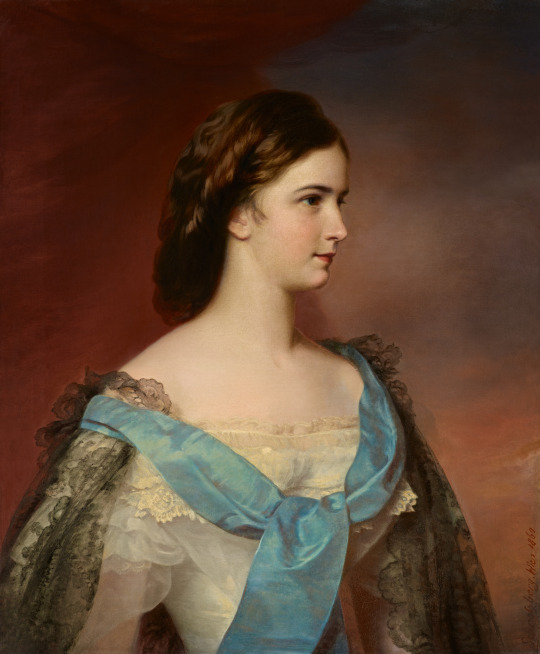
Empress Elisabeth of Austria, by Franz Schrotzberg, 1860. One of her best portraits as a young woman; no accessories, no sumptuous attire, just a simple hairstyle and a very striking profile. I wish it was used more often as a book cover.

Queen Elisabeth, by Bertalan Székely, 1869. My favorite state portrait of Elisabeth, mainly because this is the one in which you can see her coronation dress in more detail. The face isn't the best but that's the least important thing on a state portrait, I'm here for the symbolism, and Székely delivered.
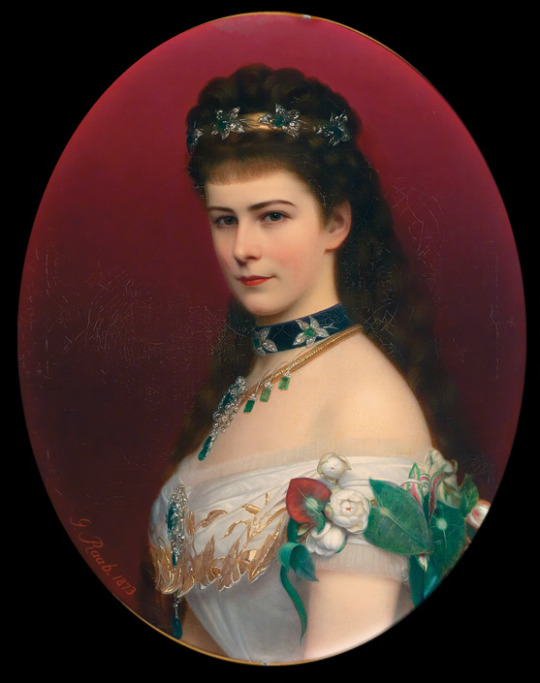
Empress Elisabeth, by Georg Raab, 1873. This was Elisabeth's best look, fight me. In general I think the 1870s was the time she served looks the most, but in particular I like this portrait because she's looking right at you. Those eyes aren't empty, they know something that you don't, and I love that (oh and that jewelry? Inherited from a certain Maria Antonia, sometime Queen of France).
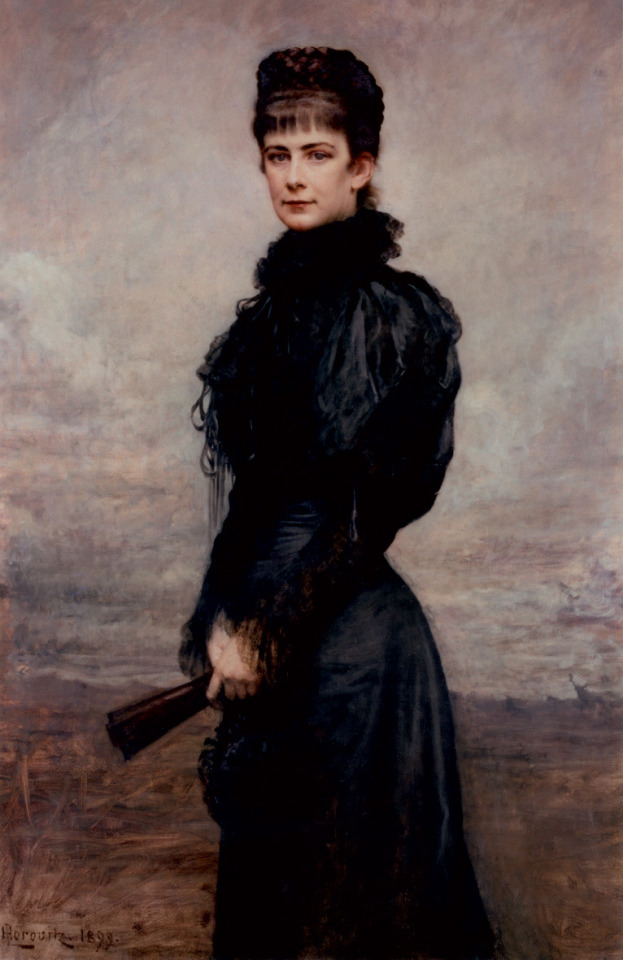
Empress Elisabeth of Austria, by Leopold Horowitz, 1899. Her best posthumous portrait, imo. She looks young like in all her portraits from this time, and yet there's something about her eyes that just tells you this isn't a young woman at all, but someone that has lived a long life. Ughh I love art AI could NEVER capture this feeling.
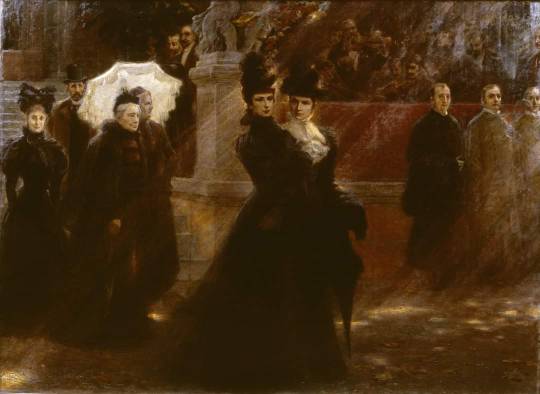
Queen Elisabeth and Archduchess Gisela at Gerbeaud, by Márk Lajos, 1900. The quality of the picture sucks but I just love this one because is so odd to see Elisabeth depicted with Gisela, specially as an adult woman. I don't know the context for it but I'd love to, specially since is also a posthumous picture. Did someone commissioned it for Gisela? Did this scene actually took place or is a creation of the artist?
There are more that I like but these are some that come to my mind now!
13 notes
·
View notes
Text
Get to Know Me Better!
Tagged by: No one. But I feel like doing this so we will pretend @fitzrove tagged me.
Three Ships: Todolf (gestures vaguely at the enormous body of fanfic I've written for them), Corrupting mentor x entirely corruptible mentee (a very large number of the ships I flit in and out of come down to this), [Insert common ship from big fandom here*] *but like one very specific scenario that no one writes about.
First Ship: Probably Loki x Sigyn. I think that was first? It's been a while.
Last Song: Gott erhalte Franz den Kaiser - Lyrics: Lorenz Leopold Haschka Melody: Joseph Haydn. For research purposes. Next time Austria plays Germany they should start singing this when they play the German anthem because it's the original lyrics damn it
Last Movie: I'm not sure. I really don't watch movies often
Currently Watching: A questionably humorous/offensive cartoon about football. I don't even watch football. Just the cartoons.
Currently Consuming: Water. But I'll probably go grab some of my chocolate horde to eat soon
Currently Craving: The ability to convert my thoughts into fic faster. And chocolate.
Tagging @adridoesstuff and @archduchessofnowhere and if anyone else wants to do it feel free
3 notes
·
View notes
Text
After staying up all night last night doing research and crying, I finally came up with my Mayerling theory:
Rudolf was depressed (or maybe bipolar) because of his political struggles, issues with Franz Josef, and troubles with Elisabeth. Mary was bipolar, because she found life as Baroness as hell. Once they met, they realized that they had that in common, unlike the rest of the Nobility. They immediately bonded, and in order to meet, Mary's cousin and Rudolf's aunt Marie Larisch let them meet in secret. That's how their affair really kicked off.
Rudolf had a botched relationship with his wife Stephanie, for Elisabeth's hatred of her had let their relationship (Rudolf and Stephanie's) to spiral. That's when Rudolf first proposed a suicide pact to an actress named Mizzi (I believe). She refused, and because Rudolf didn't want to die alone, he then went to young, naive, and lovestruck Vetsera. Vetsera agreed.
The night of 29 January, 1889, Franz Josef and Elisabeth had an Imperial dinner party, before departing to Buda, Hungary, on 31 January. Rudolf then excused himself from the party with the excuse of being sick. He then left to meet Mary at the Mayerling Hunting Lodge, which he had just purchased. After a day of hunting, he then went to Vetsera. They locked themselves in his room, and he shot her, then turned the gun on himself. When people came looking for him, they couldn't get the door open, so one man ended up breaking down the door. They then found Rudolf's body on a chair, motionless, bleeding out of the mouth, and Mary's, with rigor mortis already set in.
Minister-President Edwaurd Taaffe tried to cover up the suicide by stating that Rudolf had a "rupture of an aneurysm of the heart". The Imperial Family still believed that Vetsera had poisoned Rudolf and then killed herself. Mary's mother also believed this. When the Imperial Court medical commission arrived, and informed Franz Josef that it was a suicide pact which killed them. The Vienna Gazette still published the death as an aneurysm.
They attempted to state that Vetsera died while traveling to Venice, and was quickly buried in secret by her uncles after they snuck her body out of Mayerling by propping her body up with a broomstick. She was taken to be buried among many other suicides, at the Cistercian Abbey of Heiligenkreuz, in Heiligenkreuz, Lower Austria. Her mother was denied access to her grave by the Imperial Family for two months after her death, while they cleared all evidence that she was ever at Mayerling.
Mary left a note to her mother that read: "dear mother, please forgive me for what I've done, I could not resist love. In accordance with him, I want to be buried next to him in the cemetery of Alland. I am happier in death than life. Mary"
Rudolf's letter to Stephanie states: "Dear Stephanie, you are now rid of my presence and annoyance; be happy in your own way. Take care of the poor wee one, she is all that remains of me. To all acquaintances, especially Bombelles [Count Karl Bombelles, head of his household], Spindler [Head Secretary Heinrich Ritter von Spindler], Latour [Count Josepf Latour von Thurmburg, Rudolf's childhood governor], Wowo [Rudolf's childhood nickname for his nurse, Baroness Von Welden], Gisela [his sister], Leopold [Gisela's husband], etc., etc., say my last greetings. I go quietly to my death, which alone can save my good name. I embrace you affectionately. Your loving Rudolf."
All the rest of the official documents, including Rudolf's farewell letter to Elisabeth, are lost. It wasn't until 2015 (?) that Mary's letter to her mother, and Rudolf's farewell letter to Stephanie were found, along with Mary's baptismal certificate, and death certificate. They were discovered in the vaults of the library, in a leather bound case. The letters had allegedly been there since 1926, and my belief is that they were dropped off their by Mary's sister in law, who was ordered by Vetsera's mother to destroy them.
The Mayerling Incident remains to me the scariest, most devastating event in history, as it truly sends shivers down my spine. I feel truly awful for Rudolf and Mary, and wished that they could have been happy together.
5 notes
·
View notes
Note
Fic asks: 4 AND 13 PLUCKED CROWS ILY
EEEE my og works 👉👈
For anyone reading this who is not in my friend group because I don't talk about this story outside of it: Order of Plucked Crows is a fantasy war story about middle-aged gay soldiers forming a coup against their imperial eugenics-loving government.
4. What's your favorite line of dialogue? Reaaaaaally tough but I'm partial to this part rn:
"I just don't know what's wrong with me, Leopold. Sometimes I'm fine, but then times like this come along and my emotions are so exaggerated that I can't think straight. I want it to be over." He drank, and drank.
"Should I be worried about you?"
"I would prefer that you weren't."
"But should I, Zavi? You're gray, and distant; a corpse cast out to sea. I only want to help you, but I don't know what I could possibly do."
Xavier looked at him, his eyes painfully blue. Krausse's heart panged when he recognized the agony in his lover's eyes. "God above, Zavi. What can I do?"
The old soldier drank, swallowing hard, pushing away the lump Krausse knew had formed there. "I'm only making this painful for us, Leopold. For that, I'm sorry. I'm sorry I ever loved you… not because I regret it, not really, but we are in so much pain." He shakily set his drink on the porch railing. Tears rolled from his eyes in silence and Xavier's voice did not betray them. If the stars were dimmer, Krausse would not have noticed he was crying. "I love you. I love you so dearly that I need you. I should never have… I should have…" he cleared his throat but no more words would come.
"Xavier," Krausse stepped forward and laid his hand upon the old soldier's. "You're very lucky, you know. We're both alive, Sybil loves you and understands us."
"Hold me, as you once did out there, so far away, so long ago."
"I can't, not out here. Someone might see us."
13: What music did you listen to, if any, to get in the mood for writing this story? Or if you didn’t listen to anything, what do you think readers should listen to to accompany us while reading?
I have a lot of songs that apply to this WIP but in particular the cover of House of the Rising Sun from Wolfenstein: The New Order. It just perfectly fits the main character and the entire vibe tbh. also me like Wolfenstein.
I also like listening to anything by Franz Schubert when I write this one, probably some of the only music I can listen to while I write at all tbh
4 notes
·
View notes
Note
Hello ! I read a comment: That Franz Josef I had to have married Charlotte and his brother Maximilian with Sissi. What do you think?
Hey! Well, I don't really like the what if, because it's much more complicated than that. At first sight, I might agree. These two women had different formative years that shaped them.
Elisabeth had a fairly carefree upbringing. She was just fifteen when she met Franz Joseph. Married off the next year, her spouse couldn't have been more different than her. While he put duty above all else and valued court protocol, Elisabeth found social expectations constricting. She was too young, shy and sensitive to blossom at the Austrian court. Elisabeth later said that 'marriage is an absurd arrangement. One is sold as a fifteen-year-old child and makes a vow one does not understand and then regrets for thirty years or more, and which one can never undo again.' (didn't stop her to marry off her daughter at the same age but anyway).
On the contrary, Charlotte as the daughter of the King of the Belgians and the granddaughter of the King of the French, received a better education. She was the spitting image of her father, her mother wrote : 'as proud and self-willed as her father', 'talking just like a grown-up and using the most complicated words'. Leopold had been disappointed at her birth, but he came to adore her, and even wrote 'Charlotte is so much more attentive than her brothers. It is a tragedy she is not a little boy'. However, her mother's death was a turning point in Charlotte’s life. She was only ten and as a result she became more serious, contemplative and studious. At the same age, she asked her grandmother to give her l'Histoire de la République de Venise by Daru, it has 7 volumes!!! Aged 10!!! As the years went on, she became an ambitious young woman with again a strong sense of duty. She was a true Coburg in that regard!
At the age of sixteen, when talked of marriage began, her letters to her grandmother show her inner sense of duty and a great deal of maturity. She could have been Queen of Portugal and yet she chose the romantic Maximilian. As Empress of Mexico she was truly astounding. While Maximilian was away, she presided over the ceremonies, the Council of Ministers, visited schools and local institutions... She had a high degree of competence in the art of governing and felt completely at ease. So in that regard, she was the opposite of Elisabeth and would have most likely been thriving as she held the rank of her sister-in-law.
Yet, early on Charlotte shown signs of elation and fragility. Throughout her life, she would seek affection and love from others. And more often than not, she suffered from bout of depression. Pretty early on, Max fled the marital bed and their home. She felt neglected and it partly explains why she was so eager to take the Mexican crown. I just want to add, that even though they didn't have a traditional marriage, Max was very much attached to Charlotte.
Maximilian was a romantic, an eternal dreamer and loved to travel. Would Elisabeth have been happy with him? Maybe, she was close to him and enjoyed his company. At the same time, when she wanted to, she knew how to play her part as Empress. She could be cunning and headstrong but only with what interested her. For instance, her love for Greece and Hungary. Would Charlotte have been happy with the pragmatic Franz Joseph? Maybe, they had the same strong sense of duty. Maybe her nervous breakdown would have happened much later on or not at all. The matter of infertility could have been a problem though.
In sum, yes but not really, there are so many parameters to take into account.
What I know for sure is that they both deserved better.
#they are both such tragic figures#answer#& i'm really sorry about my late reply#empress elisabeth of austria#empress charlotte of mexico#austria
20 notes
·
View notes
Text
I’m as much a fan of the Tudors and their nonsense as much as the next person, but after The Tudors, the White Queen/White Princess series, and the Spanish Princess, not to mention all the movies about Queen Elizabeth, I think it’s time to give them a rest, move east, and introduce the world to an even more batsh!t crazy family.
I’m referring, of course, to the Habsburgs.
Quick refresher - the Habsburgs ruled over most of Central/Eastern Europe as the Archdukes of Austria, Kings of Hungary and Croatia, Kings of Bohemia (hereditary lands) and Holy Roman Emperors (basically hereditary but technically they were voted into that position).
Start in 1740. Maria Theresa is 23, pregnant with her fourth child, one of her kids has already died, and suddenly she’s Archduchess of Austria, etc. First woman to hold these (regnant) titles, based on her dad making a new law (the Pragmatic Sanction) that allowed a woman to rule. (Unfortunately, this doesn’t apply to the Holy Roman Emperor, so that passes to someone else for a few years before MT’s husband gets the title back, but she’s basically ruling in his name). So other countries, namely Prussia, don’t like this idea of a woman ruling and declare war. So Maria Theresa is 23, pregnant, and inherits a poor, backward empire that’s pushed into war. And she wins.
She’s pregnant 16 (!) times and marries off her kids. Marie Antionette - she’s a Habsburg. Her favorite daughter (yup, she had a favorite), Maria Christina, was the only one allowed to marry for love, to Albert, and the formed the couple-name Albertina (their palace is now a museum in Vienna by the same name). Oh, but before that, Maria Christina had an affair with Princess Isabella of Parma, who was - you can’t make this stuff up - her sister-in-law! Isabella dies after prematurely delivering a daughter named Maria Christina. I mean, that’s a whole half-season of plot right there!
So Maria Theresa is ruling while popping out babies, fighting wars, reforming the empire. She dies in 1780 and her son, Joseph - the one married to Isabella - comes to the throne and he does even MORE reforms including I’m pretty sure making everyone plant potatoes. He dies in 1790, his brother Leopold II rules for two years, and then Leopold’s son Francis II comes into power in 1792 just in time for the French Revolution, baby! Napoleon dismantles the Holy Roman Empire, so Francis loses that, but upgrades to Emperor of Austria.
1835 - Ferdinand I comes to power. But after generations of inbreeding, he’s sickly and suffers from multiple seizures a day. His parents were double-first cousins. He’s best known for saying, “I am the Emperor and I want dumplings.”
1848 - REVOLUTION. Ferdinand is talked into stepping down in favor of his nephew, Franz Joseph, who is 18 and rules until his death in 1916.
FJ marries his cousin, Elizabeth, Sisi. Actually, he was supposed to marry her older sister, but when he goes to meet cousin/betrothed, he sees Sisi and falls instantly in love with her. Sisi is basically the Princess Diana of her day. Super long hair, insane exercise and diets. After 1866/67, Austria has to give Hungary more rights and Sisi starts spending more and more time in Budapest, learning the Hungarian language, which really endears her to her people. She might have had an affair with a Hungarian count, and I don’t care if it’s true, it makes good TV. Nine months after FJ’s coronation in Hungary, she gives birth to her last daughter, dubbed the Hungarian Child because she was definitely conceived in Hungary and was whispered to be Andrassy’s (the Count’s) child.
Sisi only has one son, Rudolf, who, in 1889, kills himself and his mistress. Sisi herself is assassinated in 1889 while in Geneva. The assassin was there to kill someone else, couldn’t find this person, saw Sisi, and was like, “Eh, one royal’s as good as another” and shot her.
With Rudolf dead, the heir presumptive becomes Franz Ferdinand, FJ’s nephew. FF had the gall to marry for love - Sophie, a minor aristocrat. FJ opposed the marriage, but FF did it anyways, but under the agreement that his and Sophie’s children would never be in line for the throne. Turns out, that didn’t matter, because they were famously assassinated in Sarajevo in 1914, kicking off WWI (but not really because it was more complicated than that but it’s easiest to say his assassination started WWI so we’ll go with that for now).
The War does NOT go well for the Habsburgs, FJ dies in 1916, in 1918 the War ends, and then they lost their Empire. But the Habsburgs, man - what a ride.
42 notes
·
View notes
Text
King Pedro V’s 5th sibling: Infanta Maria Ana de Portugal

Born: 21st August 1843 Necessidades Palace, Lisbon, Portugal Died: 5th February 1884 (aged 40) Dresden, Saxony
Infanta Maria Ana of Portugal (Maria Ana Fernanda Leopoldina Micaela Rafaela Gabriela Carlota Antónia Júlia Vitória Praxedes Francisca de Assis Gonzaga) (21st August 1843 – 5th February 1884) was a Portuguese infanta (princess), the eldest surviving daughter of Queen Maria II of Portugal and her King consort Fernando II of Portugal, a member of the House of Bragança.
After her mother's death in 1853, when Maria Ana was just ten years old, she became the leading lady of the court, until her older brother, King Pedro V of Portugal, married Princess Stephanie of Hohenzollern-Sigmaringen,

in 1858. Although in the early stages of their acquaintance the two sisters-in-law had a good relationship, in a letter written in 1859 to Prince Albert of Saxe-Coburg and Gotha,

when Stephanie was already dead, King Pedro mentions that his sister made unflattering comments regarding his wife "because of her feminine vanity caused by a lower status (...)"
The relationship between the sisters-in-law seems to have had its ups and downs since Stephanie's arrival in May 1858 and Maria Ana's wedding in May 1859. The Queen wrote about her sister-in-law: "She is, in every respect, the one who is more like Pedro (...)", "She is a charming person, good, generous, remarkably sensible for her age, with no trace of selfishness, respected and loved by all of us (...) George of Saxony has discovered a true gem. She is happy and loves him, but she cannot talk about the moment in which she will leave her family without crying. What is certain is that she will leave a terrible emptiness behind". Maria Ana's brother, Pedro, also claims during this time that his sister is "the pearl of our family circle", in a letter to Prince Albert.
She married in Lisbon at the Belém Palace on 11th May 1859 Prince George of Saxony (1832–1904),

second son of King John I of Saxony,

a kinsman from the Catholic Albertine branch of her father's Wettin dynasty. Queen Stephanie tried to organize a brilliant ceremony, but, in the end, the wedding was quiet and went unnoticed in both Portugal and Saxony. The newly-weds spent their first days as a married couple at Belém Palace. During their short stay in Portugal after the ceremony, Prince George left a poor impression with the Portuguese Royal Family, as he "barely talked to the bride" and did not attend a theater performance to which he had been invited. During that same performance, 15-year-old Maria Ana was seen crying. The couple left to Saxony on May 14th. Maria Ana was not allowed to take Portuguese ladies-in-waiting with her and was only accompanied by her brother Luís
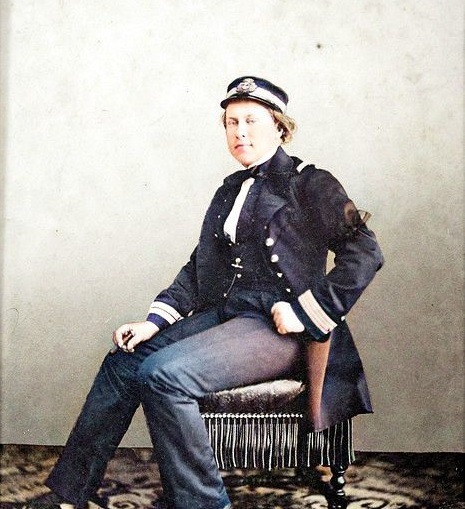
in the journey. Pedro V wrote the following regarding the wedding: "the wedding of my sister to Prince George of Saxony was celebrated with more pomp than happiness. The former is followed by a regretful fate, as he left no sympathies and people who met him often left with a poor impression."
The marriage was not a happy one, according to Historian Eduardo Nobre who claims that the Prince "did not live up to the expectations and qualities of the Portuguese Infanta". Despite their issues, they had eight children.
Although she renounced her claims to the Portuguese throne when she married, Maria Ana could still become Queen if the male line became extinct. This situation nearly happened in 1861, when King Pedro V and two of her other brothers died from Typhoid Fever and left no children. However, this hypothesis was completely put aside when her brother, King Luís I, married Princess Maria Pia of Savoy
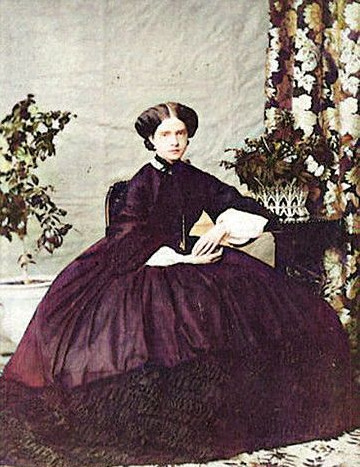
and had two sons, the future King Carlos I
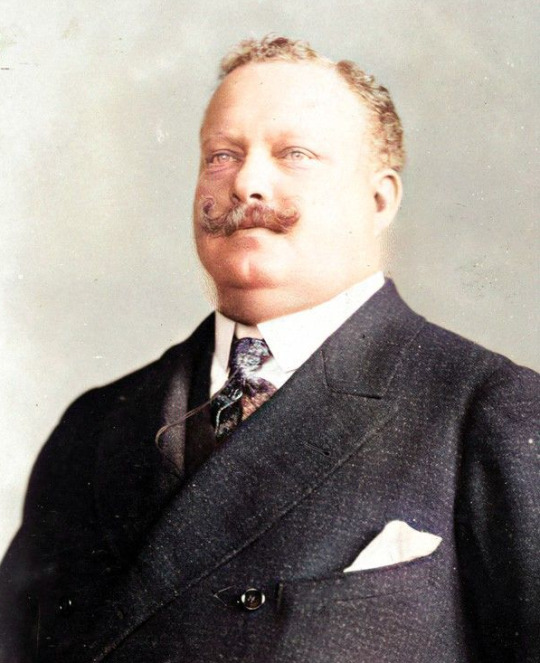
and Infante Afonso.

Despite everything, it's not likely that Maria Ana ever gave this hypothesis great importance because of her troubled marriage and many children.
Around 1883, her youngest son, Prince Albert of Saxony,

became seriously ill. Maria Ana took care of him for several months until he recovered. This effort would be fatal, as the Infanta died from exhaustion, on 5th February 1884, before her husband became King. Her husband would remain unmarried for the rest of his life.
In Portugal, her second brother Luís I soon succeeded her eldest brother Peter V as king.
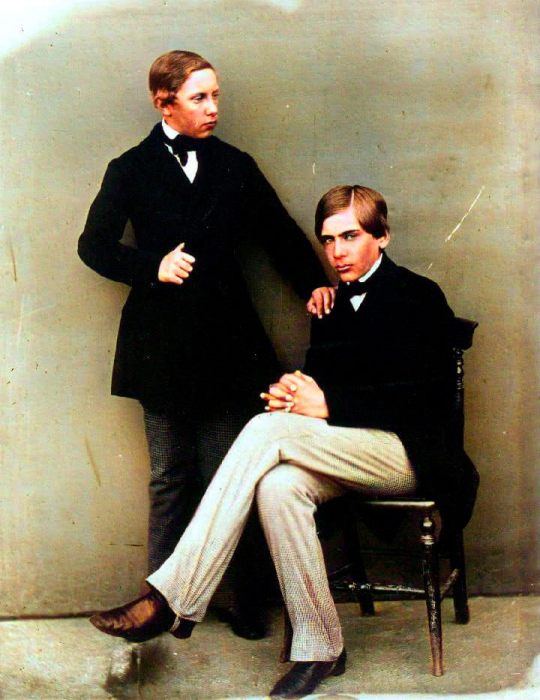
Her husband's elder brother Albert
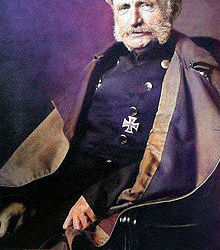
succeeded her father-in-law as King of Saxony and gradually it became clear that he and his wife Carola of Vasa
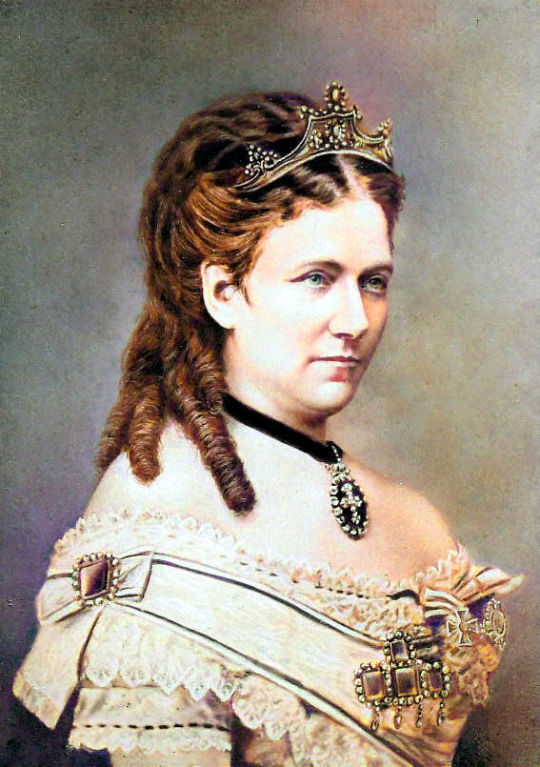
were not able to have children of their own. Maria Ana's eldest son would almost certain to one day succeed to the throne.
Marie Johanna Amalie Ferdinande Antonie Luise Juliane, (19th June 1860 - 2nd March 1861), died in childhood, no issue
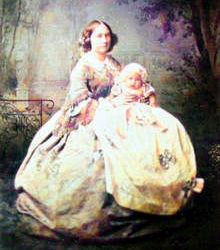
Elisabeth Albertine Karoline Sidonie Ferdinande Leopoldine Antonie Auguste Clementine (14th February 1862 - 18th May 1863) died in childhood, no issue
Mathilde Marie Auguste Viktorie Leopoldine Karoline Luise Franziska Josepha (19th March 1863 - 27th March 1933) died unmarried, no issue
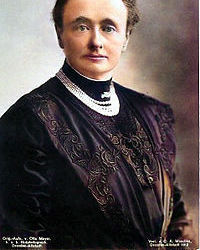
Frederick Augustus Johann Ludwig Karl Gustav Gregor Philipp (25th May 1865 - 18th February 1932)

married Princess Louise of Tuscany (1870–1947),
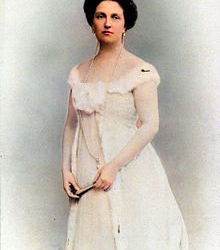
later divorced, had issue
Maria Josepha Luise Philippine Elisabeth Pia Angelica Margarethe (31st May 1867 - 28th May 1944)

married to her cousin second degrees Archduke Otto Franz of Austria (1865–1906),
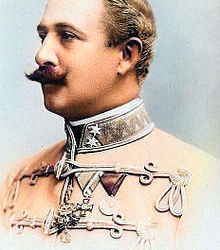
had issue
Johann Georg Pius Karl Leopold Maria Januarius Anacletus (10th July 1869 - 24th November 1938) married first Duchess Maria Isabella of Württemberg (1871–1904) and second Princess Maria Immaculata of Bourbon-Two Sicilies (1874–1906)

Maximilian Wilhelm August Albert Karl Gregor Odo (17th November 1870 - 12th January 1951) ordained as a priest, died unmarried, no issue
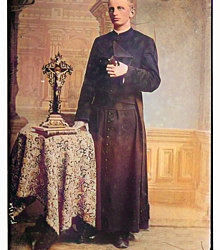
Albert Karl Anton Ludwig Wilhelm Viktor (25th February 1875 - 16 September 1900) died unmarried, no issue.

Princess Maria Ana predeceased her father Fernando, her husband George, and her brother-in-law King Albert of Saxony. In 1902 George succeeded his childless brother as king, and on his death in 1904 Maria Ana's eldest son became King of Saxony as Frederick Augustus III.
#infanta maria ana de bragança#house of bragança#queen maria ii of portugal#king consort fernando ii#king pedro v of portugal
13 notes
·
View notes
Photo




The Piazzetta Provenance Project CFA: Raubkunst at the Ringling: A Catalogue in Absentia
Raubkunst at the Ringling: Franz Marc’s Schöpfungsgeschichtehas got a lot of attention. Surprisingly many responses have come from people who think they might be in possession of some Raubkunst themselves. I confer with two trusted colleagues on these tips, but we keep this information to ourselves. We’ve been tantalizingly close to some long-missing works we would all love to see returned to the public view.
I have found though that what most inquirers are seeking is not absolution but verification. I have been asked to authenticate two works by Franz Marc just in the past year. I am reluctant to do so in these conscience cases. For one thing, as the recent book by Stefan Koldehoff and Tobias Timm, Falsche Bilder Echtes Geld: Der Fälschercoup des Jahrhunderts - und wer alles daran verdientemakes clear, art forgers have become increasingly wily and technically proficient. The current interest in Provenienzforschunghas created almost as many opportunities for grift as the thieves and opportunist of the Third Reich did in the 1930s and 1940s. The well-meaning art historians who mistakenly declared the fakes by Wolfgang Beltracchi to be long-lost works by Georges Braque, Max Ernst and others have had their careers and reputations destroyed. There is a movement toward creating a professional standard for authenticating lost works, likely by a panel of experts in the work of the artist in conjunction with the formidable forensics of the Doerner Institut.
But for the moment in this respect we keep a low profile and our ears to the whispers in the wind.
While avalanches roar above, business continues below, on the tasks that canbe accomplished: reuniting artworks whose authenticity is unimpeachable with the families or museums to whom they once belonged. To that end, a researcher and writer is being sought to investigate the provenance of a quartet of quirkily shaped, sized, and framed 18th Century oil paintings associated with the work of Venetian artist Giovanni Battista Piazzetta (1682-1754). The genre pastoral scenes are in the collection of the John and Mable Ringling Museum of Art in Sarasota, Florida, having been purchased by the museum in 1949. The destination for this research is the collaborative book project Raubkunst at the Ringling: A Catalogue in Absentia, scheduled for publication in 2020. A worthy publisher and esteemed contributors are already aboard, though like me, their expertise is in Modernist art, hence our quest.
The Piazzetta-esque works were sold to the Ringling by the German-Jewish art, antique, and textiles dealer Adolph Loewi, who operated galleries in the Veneto as well as New York City and Los Angeles. In 1939 Loewi fled Italy with his family, losing some of his files in the process. Whether the documentation for the Piazzetta-adjacent works was among those documents is not clear; in any case, no record of their provenance exists prior to the Ringling purchase.
As I’ve noted, because the Modern Art that had been declared entartete– degenerate – by the Third Reich was seized by the Germans from German government-sponsored museums it is – technically – not considered Raubkunst, stolen art, though certainly the Nazis profited from its sale. Works that were stolen from private owners and collectors, or procured through forced sales, are truestolen objects, and subject to return to the families of their original owners.
Even in seemingly clear-cut cases, this process can be challenging. In many instances, entire families were murdered in their homes or in concentration camps, and no heirs exist to lay claim upon what should have been prized heirlooms. The few remaining survivors of Nazi art theft or their descendants must file official claims with the German government or bring private litigation against museums and auction houses. Claims to works must be substantiated by proof of ownership – a paradox that ends many legal proceedings before they begin since receipts, ledgers, diaries, and documentary stamps were often destroyed, dispersed, or concealed by those who had stolen the artworks in the first place.
Recent books such as Simon Goodman’s The Orpheus Clock: The Search for My Family's Art Treasures Stolen by the Nazis (2016) and The Lady in Gold: The Extraordinary Tale of Gustav Klimt's Masterpiece, Portrait of Adele Bloch-Bauer (2015) by Anne-Marie O’Connor detail the eventual triumph of the resourceful Goodman and Altmann families pitted against adversaries in museums and galleries over the course of lengthy and expensive court battles. Some cases turn less flamboyantly but more emotionally. The Austrian art dealer Lea Bondi-Jaray lost her beloved Portrait of Wally, a 1912 painting by her friend Egon Schiele, in the Anschluss in 1939. She went to her grave fighting to have the painting returned from private gallerist Rudolph Leopold who had acquired the painting in collusion with the Austrian government in 1954. Bondi-Jaray’s family continued the battle, eventually taking on no lesser adversaries than Ronald Lauder, the Museum of Modern Art, and Austria’s Leopold Museum. The case turned when the family produced pre-war photographs of Portrait of Wallyin Bondi-Jaray’s Vienna apartment, convincing the United States Customs Service to seize the painting and United States District Court for the Southern District of New York Judge Loretta A. Preska to allow the case to proceed to trial. The Leopold Museum settled with the family in 2010.
Because of their appealingly peculiar nature and the seeming completeness of the grouping of four, it seems likely that the Piazzetta workshop paintings came from a private collection. But whose? The task of the writer-researcher who takes on this investigation will be to unravel this mystery. The outcome may be as simple as a lost receipt establishing a chain of custody that puts the Ringling in the clear, or as profound as reuniting the quartet with a family who thought them lost decades ago.
I began this project in 2016 when I discovered two woodblock prints by the Blaue Reiterartist Franz Marc (1880-1916) in the Ringling collection, identified them as Raubkunst, and eventually traced them back to their original owners in Stuttgart and Mannheim. My findings were accepted as a “closed case” this past February by the Commission for Looted Art in Europe. So the investigation has since expanded in scope, to say the least. I would welcome collaboration with, as well as questions and advice from, members of the “Raubkunst Research” community. Contact me and I’ll get back to you. – Jean Marie Carey
Circle of Giovanni Battista Piazzetta 1682 -1754), Pastoral Scene, c. 1750. Oil on canvas, (56.5 x 92.7 cm). The John and Mable Ringling Museum of Art, Object number: SN627-SN630.
#Giovanni Battista Piazzetta#raubkunst#nazi looted art#john and mable ringling#ringling museum#sarasota#provenance#provenance research#cfa#cfp#art#art history#italian art#18th Century#rococo art#painting#collaboration#book project
26 notes
·
View notes
Text
LXVIII.
October 2018
In late October, Archduchess Isabella left France to attend the wedding of Duchess Sophie of Württemberg and Count Maximilian d‘Andigné. While Sophie was a distant cousin, she was more so a closer friend of Isabella. To Isabella’s surprise, Sophie’s cousin Prince Joseph Wenzel of Liechtenstein, second in line to the Liechtenstein principality had a familiar face as his date.
The familiar face was Countess Laura Henckel von Donnersmarck, Isabella’s second cousin through their mutually shared great-grandparents, Charlotte, Grand Duchess of Luxembourg and Felix, Prince Consort of Luxembourg. Within days of the Württemberg wedding, Prince Joseph Wenzel and Countess Laura had announced their engagement with an intended wedding in the Spring of 2019. Prince Joseph Wenzel’s great-uncle, the Swedish billionaire, Count Gustaf Douglas had invited few selected friends and family to his home in Sweden for a dinner party.
The engagement came to a great shock to Isabella, as she and many others never heard of a whisper about a relationship between Joseph Wenzel and Laura. Whispers quickly went around saying Laura was being pushed into an arranged marriage. The marriages of Isabella to Harry and Princess Olga Galitzine and Grand Duke George Mikhailovich were being brought up again. Olga and George were having an unhappy marriage so far.
The last thing Isabella had heard was Olga and George were highly disappointed in the birth of a daughter, a little girl whom they named Maria-Olga. There were talks about a plan, a plan to marry royals with other royals and those with noble blood. Isabella had been the perfect Habsburg-Bourbon royal. Laura’s mother was a Princess of Hohenberg, a great-granddaughter of Archduke Franz Ferdinand of Austria, and while she had Habsburg-Bourbon blood, Laura also had much noble blood.
Prince Joseph Wenzel needed a royal or noble blooded wife and though there were better choices, Laura was the only one who had accepted his proposal. Like Isabella, Joseph Wenzel recognized that marrying for love was a choice, being born with such a family meant a royal duty that made him forget having choices. His parents and grandparents were pleased to have Laura marry into their family. For centuries the ties of the House of Liechtenstein and the Houses of Bourbon and Habsburg were prominent and this new marriage proved to just be that once again.
Not long after, Isabella and Queen Letizia of Spain attended the First World Health Organization Conference on air pollution and health at the Headquarters of the World Health Organization, in Geneva, Switzerland. The simple fact that Isabella could speak Spanish with the Spanish Queen earned her the nicknamed of ‘Diplomatic Duchess’ as she did similar tactics with other foreign royals and politicians. The next day Isabella stepped out with Kate on their first joint engagement.
The two women went to the First World War Galleries at the Imperial War Museum. While the conversation started talking about Kate’s distant family members who died in World War One, things quickly changed to focus on Isabella. To many, why would anyone spend their time on Kate whose family were simple soldiers when Isabella was standing right next to her.
Isabella’s great-grandfather was Emperor of Austria & King of Hungary, her great-great-grandfather was King of the Belgians, her great-aunt was Grand Duchess of Luxembourg her great-grand-uncle was the King of Sweden, a great-great-grand-uncle was King of Denmark, another great-great-grand-uncle was King of Norway, another great-great-grand-uncle was King of Greece, another great-great-grand-uncle was Tsar of Bulgaria, and more distant relatives ruled the Kingdoms of Spain, Bavaria, and Saxony because of marriages to Archduchesses of Austria or their own Bourbon blood.
Compared to Isabella, Kate looked small and dull. A simple commoner standing next to an Archduchess of Austria could hardly compare in a historians eyes. When Isabella brought out stories told to her by her paternal grandfather Archduke Carl Christian of Austria and maternal grandmother Josephine Charlotte, Grand Duchess of Luxembourg nee Princess of Belgium about World War One, nothing Kate could have said or done would take the attention off of Isabella. When Isabella shared family stories about the times of world war one in Sweden, Austria, Belgium, and Denmark Kate accepted the situation.
When the car was pulled up and both women had gotten into the car, they were treated by Isabella’s two elder ladies-in-waiting.
“Your mother won’t appreciate that,” spoke Charlotte first.
“I was simply telling stories. My grandmother would have appreciated her own grandmother being talked about,” replied Isabella.
“Her mother would have appreciated it too,” added Christine.
“Marie Astrid was just 4 when Princess Ingeborg died. I highly doubt she would remember her great-grandmother very well,” bite back Charlotte.
“Talking about family members is good, it keeps their memory alive,” said Kate.
“The history books written about Belle’s family are doing that job for her. That’s what happens when you have such a family like hers,” snarked Charlotte.
“Just because books were written doesn’t mean one should stop talking about family. What’s written can be completely different from actual experiences,” replied Kate.
“Kate is right. How we interpret book is not how we interpret family. You’ve read all those horrible things about my family over the centuries. Many of them might not even be true,” agreed Isabella.
“Really? Such the cases of Juana or Maria the Mad. What about King Charles VI of France or King Philip V of Spain? You descended from them and they all have the nickname the Mad. You don’t think what we read about them is false? What about all the atrocities they committed since the beginning of time? Belle, you tend to forget that you come from a family of inbreeding and despicable acts, what else are the Habsburgs known for and it looks like your family does not learn from their past,” argued Princess Charlotte.
“I think that’s enough bickering for today. We have a fun day ahead of us tomorrow for the centenary celebrations. We should look forward now,” interrupted Princess Christine.
Isabella turned to look over at Kate who was shocked at the way the conversation went too. Kate was trying to help but Charlotte was just as obnoxious about royal blood more so than Isabella. When the car pulled into Kensington, Kate waited until they were out of the car before talking.
“It was very nice going on this engagement with you today. Hopefully there will be more,” smiled Kate.
“Yes, of course. Thank you for dealing with my ladies, I know sometimes it seems backward to have them-”
“No, not at all. I understand that they mean a lot to you and they do more,” interrupted Kate.
“Okay, good. I didn’t want you to get the wrong impression.”
“Well, I’ll see you tomorrow morning.”
November 2018
Morning at Westminster then attending several services were exhausting to Isabella. Just minutes after the engagements in London ended, she was on a plane to Luxembourg. There was a mass celebrated in memory of the deceased members of the Grand Ducal Family. While Isabella and Harry had gone, other royals include Grand Duke Henri, Grand Duchess Maria Theresa, Prince Guillaume, Princess Sibilla, Princess Charlotte, and Prince Leopold. It was a small gathering but the simple fact that Ferdinand von Habsburg came to another family event puzzled Isabella.
After the mass when the family was mingling around at the Grand Ducal Palace Isabella felt Harry and went immediately to Ferdinand.
She quietly dragged him away from the crowd, “Two family events, you have to tell me the truth Ferdinand.”
“Charlotte and I are dating. You know that.”
“Yes, but the simple fact that you come to two mass events is getting me suspicious. How serious is it?” asked Isabella.
“Serious enough to be here,” answered Ferdinand.
“She is just 18 Ferdinand.”
“You had someone at 18. It is not like we’re getting married.”
“But marriage is a thought in the far future, right?” asked Isabella.
“While it hates me to say this to you out of all people, but... this is none of your business.”
“She’s my little cousin. I remember holding her in my arms hours after she was born Ferdinand.”
“You’re treating me like a villain,” observed Ferdinand.
“You are 21.”
“It’s a three-year age difference. You and your husband are eight years apart. You’re being hypocritical again.”
“When have I ever been hypocritical?” asked Isabella.
Ferdinand hesitated, “We are getting off point Belle. The point is there is no secret agenda, no lies, no anything but the simple fact that I really like Charlotte and I want to be with her.”
“I just don’t want to see her hurt. She was always like another little sister to me. Charlotte was the only girl, surrounded by three boys, and I just wanted her to be happy,” confessed Isabella.
“I just want her to be happy too. Her parents and brothers are happy with our relationship. Things are going great for us.”
Isabella looked into the eyes of Ferdinand knowing she shouldn’t even have questioned Charlotte and Ferdinand’s relationship, “I’m sorry.”
“You don’t have to be sorry about anything. You had the right intentions but bad execution.”
“I’m sorry. It’s been a rough couple of months.”
“It’s understandable. Your name hasn’t been off the front page of the papers since your engagement. At least it feels that way,” chuckled Ferdinand at the end.
“I have to go now,” said Isabella in embarrassment.
“Okay,” smiled Ferdinand.
Before Isabella could return to Harry standing alone across the room, Isabella’s mother Marie Astrid had put her arm around Isabella’s waist pulling her in another direction.
“What is going on?”
“I wanted to ask you something.”
“What?”
“Have you called Joachim lately?” asked Marie Astrid.
“I have,” answered Isabella.
“Belle! You need to stop doing things like that. I also received a call from Alois saying you are ignoring his calls and from a Kinsky Count that are forgoing all responsibility on the trusts. You are spending far more than you are earning and you have paid barely enough attention to anything else,” explained Marie Astrid.
“What would you have me do?”
“Hand over the chateaus to someone else and put yourself on a budget. No more giving millions to charity. Form a council that has to approve every transaction over 100,000. Think logically about this or face having to sell you jewels within the next decade.”
“I’ll call a meeting with Johann and Alois. It will most likely not happen for a couple more weeks since I have a full schedule,” said Isabella.
“There is another thing I wanted to talk about.”
“What is it?” asked Isabella.
“Christine and Charlotte came to me before mass and said that they believe you might be pregnant.” There was a longed silence between the two women before Marie Astrid spoke again, “Is it true?”
“I don’t know.”
“Do you want to know?”
“I don’t know,” repeated Isabella.
“I can call a doctor and we can find out tonight.”
“I have to fly back to London with Harry tonight. If I stay, he’ll think I’m running away from my responsibilities or doing something I shouldn’t.”
“Then your father and I will talk to him. Belle, you should know by now.”
“I’ve been under a lot of stress lately. I haven’t been paying much attention to many things,” replied Isabella.
“I worry for you.”
“I understand mama.”
“If you are pregnant, then you can’t be on pills or at least the ones doctors would usually recommend,” said Marie Astrid.
“Pills? You want to go on medication?” asked Isabella.
“If it helps you and everyone around you then yes, I do. Belle, you have to think about Harry, your sons, and another possible child.”
“I understand.”
“I’m only trying to look out for you. You are my only daughter that is not within driving distance of me. I worry like any other mother would,” explained Marie Astrid.
#PHFF#prince harry fanfiction#prince harry fanfic#royal fanfiction#royal fanfic#fanfiction#Prince Harry
10 notes
·
View notes
Photo

Saint of the Day – 9 February – Blessed Anna Katharina Emmerick/Anne Catherine Emmerich (1774-1824) – Handicapped, Virgin, Religious, Penitent, Marian Visionary, Mystic, Ecstatic, Writer and Stigmatist. Her body is incorrupt.
Anna Katharina Emmerick was born on 8 September 1774 in the farming community of Flamsche near Coesfeld. She grew up amidst a host of nine brothers and sisters. She had to help out in the house and with the farm work at an early age. Her school attendance was brief, which made it all the more remarkable that she was well instructed in religious matters. Her parents and all those who knew Anna Katherina noticed early on that she felt drawn to prayer and to the religious life in a special way.
Anna Katharina laboured for three years on a large farm in the vicinity. Then she learned to sew and stayed in Coesfeld for her further training. She loved to visit the old churches in Coesfeld and to join in the celebration of Mass. She often walked the path of Coesfeld’s long Way of the Cross alone, praying the stations by herself. She wanted to enter the convent but since her wish could not be fulfilled at that time, she returned to her parental home. She worked as a seamstress and, while doing so, visited many homes.
Anna Katherina asked for admission to different convents but she was rejected because she could not bring a significant dowry with her. The Poor Clares in Münster finally agreed to accept her if she would learn to play the organ. She received her parents’ permission to be trained in Coesfeld by the organist Söntgen. But she never got around to learning how to play the organ. The misery and poverty in the Söntgen household prompted her to work in the house and help out in the family. She even sacrificed her small savings for their sake.
Together with her friend Klara Söntgen Anna Katharina was finally able to enter the convent Agnetenberg in Dülmen in 1802. The following year she took her religious vows. She participated enthusiastically in the life of the convent. She was always willing to take on hard work and loathsome tasks. Because of her impoverished background she was at first given little respect in the convent. Some of the sisters took offence at her strict observance of the order’s rule and considered her a hypocrite. Anna Katharina bore this pain in silence and quiet submission.


From 1802 to 1811 Anna Katharina was ill quite often and had to endure great pain.
As a result of secularisation the convent of Agnetenberg was suppressed in 1811 and Anna Katharina had to leave the convent along with the others. She was taken in as a housekeeper at the home of Abbé Lambert, a priest who had fled France and lived in Dülmen. But she soon became ill. She was unable to leave the house and was confined to bed. In agreement with Curate Lambert she had her younger sister Gertrud come to take over the housekeeping under her direction.
During this period Anna Katharina received the stigmata. She had already endured the pain of the stigmata for a long time. The fact that she bore the wounds of Christ could not remain hidden. Dr Franz Wesener, a young doctor, went to see her and he was so impressed by her that he became a faithful, selfless and helping friend during the following eleven years. He kept a diary about his contacts with Anna Katharina Emmerick in which he recorded a wealth of details.
A striking characteristic of the life of Anna Katharina was her love for people. Wherever she saw need she tried to help. Even in her sickbed she sewed clothes for poor children and was pleased when she could help them in this way. Although she could have found her many visitors annoying, she received all of them kindly. She embraced their concerns in her prayers and gave them encouragement and words of comfort.
Many prominent people who were important in the renewal movement of the church at the beginning of the 19th century sought an opportunity to meet Anna Katharina, among them Clemens August Droste zu Vischering, Bernhard Overberg, Friedrich Leopold von Stolberg, Johann Michael Sailer, Christian and Clemens Brentano, Luise Hensel, Melchior and Apollonia Diepenbrock. The encounter with Clemens Brentano was particularly significant. His first visit led him to stay in Dülmen for five years. He visited Anna Katharina daily to record her visions which he later published.
Anna Katharina grew ever weaker during the summer of 1823. As always she joined her suffering to the suffering of Jesus and offered it up for the salvation of all. She died on 9 February 1824. She was buried in the cemetery in Dülmen. A large number of people attended the funeral. Because of a rumour that her corpse had been stolen the grave was reopened twice in the weeks following the burial. The coffin and the corpse were found to be intact.


Clemens Brentano wrote the following about Anna Katharina Emmerick: “She stands like a cross by the wayside”. Anna Katharina Emmerick shows us the centre of our Christian faith, the mystery of the cross.
The life of Anna Katharina Emmerick is marked by her profound closeness to Christ. She loved to pray before the famous Coesfeld Cross and she walked the path of the long Way of the Cross frequently. So great was her personal participation in the sufferings of our Lord that it is not an exaggeration to say that she lived, suffered and died with Christ. An external sign of this, which is at the same time, however, more than just a sign, are the wounds of Christ which she bore.


Anna Katharina Emmerick was a great admirer of Mary. The feast of the Nativity of Mary was also Anna Katharina’s birthday. A verse from a prayer to Mary highlights a further aspect of Anna Katharina’s life for us. The prayer states, “O God, let us serve the work of salvation following the example of the faith and the love of Mary”. To serve the work of salvation – that is what Anna Katharina wanted to do.
In Colossians the apostle Paul speaks of two ways to serve the gospel, to serve salvation. One consists in the active proclamation in word and deed. But what if that is no longer possible? Paul, who obviously finds himself in such a situation, writes: “Now I rejoice in my sufferings for your sake and in my flesh I complete what is lacking in Christ’s afflictions for the sake of his body, that is, the church” (Col 1:24).
Anna Katharina Emmerick served salvation in both ways. Her words, which have reached innumerable people in many languages from her modest room in Dülmen through the writings of Clemens Brentano, are an outstanding proclamation of the gospel in service to salvation right up to the present day. At the same time, however, Anna Katharina Emmerick understood her suffering as a service to salvation. Dr Wesener, her doctor, recounts her petition in his diary: “I have always requested for myself as a special gift from God that I suffer for those who are on the wrong path due to error or weakness, and that, if possible, I make reparation for them.” It has been reported that Anna Katharina Emmerick gave many of her visitors religious assistance and consolation. Her words had this power because she brought her life and suffering into the service of salvation. In serving the work of salvation through faith and love, Anna Katharina Emmerick can be a model for us all.
Dr Wesener passed on this remark of Anna Katharina Emmerick: “I have always considered service to my neighbour to be the greatest virtue. In my earliest childhood I already requested of God that he give me the strength to serve my fellow human beings and to be useful. And now I know that he has granted my request.” How could she who was confined to her sickroom and her bed for years serve her highborn? (vatican.va)
Her Works: • The Dolorous Passion of Our Lord Jesus Christ • The Life of Jesus Christ and Biblical Revelations • The Lowly life and Bitter Passion of Our Lord Jesus Christ and His Blessed Mother

Anna was Beatified on 3 October 2004, by St Pope John Paul II. However, the Vatican focused on her own personal piety rather than the religious writings associated to her by Clemens Brentano. Her documents of postulation towards canonisation is handled by the Priestly Fraternity of St Peter. Father Peter Gumpel who was involved in the analysis of the matter at the Vatican told Catholic News Service: “Since it was impossible to distinguish what derives from Sister Emmerich and what is embroidery or additions, we could not take these writings as a criteria. Therefore, they were simply discarded completely from all the work for the cause”.
In 2003 actor Mel Gibson brought Anne Catherine Emmerich’s vision to prominence as he used her book The Dolorous Passion as a key source for his movie The Passion of the Christ. Gibson stated that Scripture and “accepted visions” were the only sources he drew on and a careful reading of Emmerich’s book shows the film’s high level of dependence on it.
In 2007 German director Dominik Graf made the movie The Pledge as a dramatisation of the encounters between Anne Catherine and Clemens Brentano, based on a novel by Kai Meyer.


House of the Virgin Mary

Neither Brentano nor Emmerich had ever been to Ephesus and indeed the city had not yet been excavated; but visions contained in The Life of The Blessed Virgin Mary were used during the discovery of the House of the Virgin Mary, the Blessed Virgin’s supposed home before her Assumption, located on a hill near Ephesus, as described in the book Mary’s House.
In 1881, a French priest, the Abbé Julien Gouyet used Emmerich’s book to search for the house in Ephesus and found it based on the descriptions. He was not taken seriously at first but sister Marie de Mandat-Grancey persisted until two other priests followed the same path and confirmed the finding.
The Holy See has taken no official position on the authenticity of the location yet but in 1896 Pope Leo XIII visited it and in 1951 Pope Pius XII initially declared the house a Holy Place. St Pope John XXIII later made the declaration permanent. Blessed Pope Paul VI in 1967, St Pope John Paul II in 1979 and Pope Benedict XVI in 2006 visited the house and treated it as a shrine.
(via AnaStpaul – Breathing Catholic)
#blacemmerich#february9blacemmerich#melgibson'spassion#houseoftheblessedvirginmary#catholic#catholicism
45 notes
·
View notes
Text
I'm glad they made heirs of the night as the TV adoption of the die Erben der Nacht books.
Like you may know I love both of those fandoms dearly.
Of course sometimes I think it would have been cool to see the books really translated to the screen, because these characters and their dynamics, the whole Story have my heart.
But then again I know that this wouldn't be a production that would be possible with a low budget, which it definitely would be. Because let's be real Hollywood wouldn't adopt a rather unpopular german bookseries.
So this would lead to a primarily german production and I must say german Films, especially fantasy films aren't that good.
So what would we need for a satisfying adoptation of my favourite books:
Actors
For our maincast we need actors who really resemble their characters. For example in age, they need to look thirteen at the start and seventeen/eighteen/nineteen at the end. This would lead to the first problem because either you change actors midway or you do the Harry Potter and let the actors age with their characters.
The only problem there is Ivy who doesn't age. How would you ever portray that in various films or an ongoing series? Because it wouldn't only be one Film, there are six books!
Also they really would need to resemble their characters. Meaning we need an actor for Luciano who is a bit chubby at the start who grows into a slender handsome young man.
We would need a tall actress with blonde, redish hair and blue eyes for Alisa because I don't accept any other looks of my favourite female fictional character!
Ivy, would need a petite actress. We need silver hair and turquoise eyes! I think wigs and contacts would be the solution. Actually apart from that aging part I think she's the easiest to be casted accurately.
And then the hardest character to bring onto the screen: Franz Leopold de Dracas
He is described as the most beautiful creature on this earth, like his entire family!! So we would need someone truly good looking to play him. Yes beauty is subjective but we need handsome actors for the Dracas!! And they would need to resemble each other, all with dark hair and stuff.
Also please I want actors who can really act and portray my favourite characters well!
So actors are one point.
Sets
The books take place in various cities of Europe so we would need sets in Rome, Ireland, Paris, Vienna, London and Venice or at least a studio which looks realistic enough.
We would need a Dracas Parlais, the Garnier Opera in Paris, actually many operas and theatres, a Dracula castle, the catacombs of Paris and many many more.
This is something that would cost a lot of money which the filmmakers would probaply not have.
Skills
Dancing (especially the waltz) and fencing are integral parts of the books. So the actors would need training in both.
Especially our Dracas, because it's said that especially Anna Christina and Franz Leopold are really good at fencing, they literally save someone by killing an evil vampire! Also the other heirs learn it in the fourth book so this is just really important.
And dancing!! The dancing is important, especially for Alisa and Franz Leopold because they fall in love on the dance floor.
So we would not only need skilled actors but also sets, like the dance Pavillon or the huge ball at the end of the book!
Costumes/Hairstyles
We would need historically accurate clothing. Day dresses, evening dresses, waistcoats and they would need to really look like something and not like a cheap costume. We also need historically accurate hairstyles, especially for the female characters.
These books are so hard to adapt them in a really good way so I’m glad we got heirs of the night instead of an adaptation that tries to bring the books to screen. All the changes in the characters and plot were good! Heirs of the night is perfect for the screen and die Erben der Nacht is best in book form. Both versions have their own magic, their own amazing characters their own plot and that’s good!
2 notes
·
View notes
Note
Hi! Can I have a story on what Charlotte you’re talking about in the ask you just posted and why she deserves to be portrayed better? (Honestly all characters should be portrayed better tbh)
Hi! You probably already know about her, but I was talking about the wife of Archduke Maximilian (Emperor Franz Josef's younger brother) Charlotte of Belgium, better known as Empress Carlota of Mexico. She was the only daughter of King Leopold I of Belgium and his second wife Louise of Orleans (and therefore she was also a first cousin of Queen Victoria and Prince Albert).
Charlotte is often blamed of convincing her husband to accept the crown of Mexico despite being a very dangerous enterprise only because she wanted to be empress. She tends to be portrayed as an ambitious woman that only cared for power and single handedly kept her husband in Mexico when they'd lost all support. While her role in the adventure can't be denied (she was very involved from the beginning until the end), making her the sole responsible is just not truth: Max wanted it as much as her.
Charlotte also didn't got along with her sister-in-law Empress Elisabeth (I talked a bit about this here), so there's a chance that if she appears in season 2 of The Empress she will be portrayed in a negative light or even as an antagonist, specially since Max is in love with Elisabeth in this series (I can almost SEE the petty fights and jealous tantrums uhggg). Of course we might all be wrong and maybe Netflix actually give us an interesting and nuanced portrayal of her (or maybe she won't even appear and we are all worrying for nothing); but personally I do not trust them after the damage I took from season 1 lol
11 notes
·
View notes